The role of liquid phase microextraction in plant and animal food analysis
Food samples require extensive sample preparations for instrumental analyses due to the complex matrices involved. Food safety regulatory agencies also require sample preparation procedures that are
[...] Read more.
Food samples require extensive sample preparations for instrumental analyses due to the complex matrices involved. Food safety regulatory agencies also require sample preparation procedures that are accurate, sensitive, robust, and, above all, fast, to handle the requirements for determining the safety of the massive amounts of foods and food products needed for human, pet and livestock consumption. There is also an inseparable interconnection between environmental, agricultural, forensic, cosmetic and industrial analytical chemistry involved in this requirement, and advances in analytical methodology are simultaneously applicable to all of these realms. As a response to these needs, the quick, easy, cheap, effective, rugged, and safe (QuEChERS) method was developed to provide multiclass analysis of agricultural products, and remains the basis for regulatory procedures for large scale analyses of food samples containing a wide variety of possible contaminants. However, since QuEChERS does not enhance analyte concentrations during sample preparation of these complex samples, the methodology also requires very expensive, very sensitive final analytical instrumentation, requiring highly trained personnel and continual maintenance. Smaller regulatory and field laboratories may also need sample preparation procedures for only a limited number of specific pesticides, metals, polycyclic aromatic hydrocarbons (PAHs) or other contaminants, requiring much less expensive and labor-intensive preparations and instrumentation. This is the role of liquid phase microextraction (LPME) in food sample preparation and analysis. LPME, individually or in combination with other sample preparation procedures, such as QuEChERS or traditional techniques such as solid phase extraction (SPE), can meet the requirements for sensitive and accurate analyses of specific analytes found in complex matrices, providing not only cleanup, but concentration of sample extracts, allowing the use of greener, less expensive and low maintenance final determination analytical instrumentation. Crucial review and application publications are tabulated to allow analysts easier access to appropriate publications to use this information for developing new or improved and greener validated methods for plant and animal food analyses.
John M. Kokosa
View:536
Download:16
Times Cited: 0
Food samples require extensive sample preparations for instrumental analyses due to the complex matrices involved. Food safety regulatory agencies also require sample preparation procedures that are accurate, sensitive, robust, and, above all, fast, to handle the requirements for determining the safety of the massive amounts of foods and food products needed for human, pet and livestock consumption. There is also an inseparable interconnection between environmental, agricultural, forensic, cosmetic and industrial analytical chemistry involved in this requirement, and advances in analytical methodology are simultaneously applicable to all of these realms. As a response to these needs, the quick, easy, cheap, effective, rugged, and safe (QuEChERS) method was developed to provide multiclass analysis of agricultural products, and remains the basis for regulatory procedures for large scale analyses of food samples containing a wide variety of possible contaminants. However, since QuEChERS does not enhance analyte concentrations during sample preparation of these complex samples, the methodology also requires very expensive, very sensitive final analytical instrumentation, requiring highly trained personnel and continual maintenance. Smaller regulatory and field laboratories may also need sample preparation procedures for only a limited number of specific pesticides, metals, polycyclic aromatic hydrocarbons (PAHs) or other contaminants, requiring much less expensive and labor-intensive preparations and instrumentation. This is the role of liquid phase microextraction (LPME) in food sample preparation and analysis. LPME, individually or in combination with other sample preparation procedures, such as QuEChERS or traditional techniques such as solid phase extraction (SPE), can meet the requirements for sensitive and accurate analyses of specific analytes found in complex matrices, providing not only cleanup, but concentration of sample extracts, allowing the use of greener, less expensive and low maintenance final determination analytical instrumentation. Crucial review and application publications are tabulated to allow analysts easier access to appropriate publications to use this information for developing new or improved and greener validated methods for plant and animal food analyses.
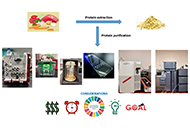 Separation methods for food protein purification and analysisOpen AccessReviewThe extraction, separation, and purification of dietary proteins from a variety of food sources are crucial for their targeted use in food applications. To achieve this, proteins should be effectively separated from non-protein co [...] Read more.Anushi Madushani Wijethunga, Chijioke EmenikePublished: July 30, 2024 Explor Foods Foodomics. 2024;2:391–407
Separation methods for food protein purification and analysisOpen AccessReviewThe extraction, separation, and purification of dietary proteins from a variety of food sources are crucial for their targeted use in food applications. To achieve this, proteins should be effectively separated from non-protein co [...] Read more.Anushi Madushani Wijethunga, Chijioke EmenikePublished: July 30, 2024 Explor Foods Foodomics. 2024;2:391–407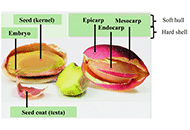 Nutritional and bioactive characterization of pistachio—a review with special focus on healthOpen AccessReviewThis paper reviews the nutritional quality and safety of edible farmed insects from the point of view of the Czech-Slovenian bilateral project: Quality, Safety and Authenticity of Insect Protein-bas [...] Read more.Juliana Ripari Garrido ... María Victoria SalinasPublished: July 26, 2024 Explor Foods Foodomics. 2024;2:363–390
Nutritional and bioactive characterization of pistachio—a review with special focus on healthOpen AccessReviewThis paper reviews the nutritional quality and safety of edible farmed insects from the point of view of the Czech-Slovenian bilateral project: Quality, Safety and Authenticity of Insect Protein-bas [...] Read more.Juliana Ripari Garrido ... María Victoria SalinasPublished: July 26, 2024 Explor Foods Foodomics. 2024;2:363–390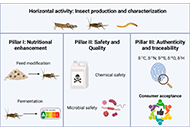 Quality, safety and authenticity of insect protein-based food and feed: insights from the INPROFF ProjectOpen AccessReviewThis paper reviews the nutritional quality and safety of edible farmed insects from the point of view of the Czech-Slovenian bilateral project: Quality, Safety and Authenticity of Insect Protein-based Food and Feed (INPROFF). Inse [...] Read more.David Heath ... Nives OgrincPublished: July 24, 2024 Explor Foods Foodomics. 2024;2:339–362
Quality, safety and authenticity of insect protein-based food and feed: insights from the INPROFF ProjectOpen AccessReviewThis paper reviews the nutritional quality and safety of edible farmed insects from the point of view of the Czech-Slovenian bilateral project: Quality, Safety and Authenticity of Insect Protein-based Food and Feed (INPROFF). Inse [...] Read more.David Heath ... Nives OgrincPublished: July 24, 2024 Explor Foods Foodomics. 2024;2:339–362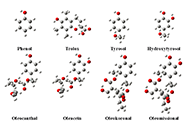 Metrological aspects of a gas-phase DFT/B3LYP quantum-chemical approach to prioritize radical scavenging activity among a group of olive oil phenolsOpen AccessOriginal ArticleAim: A protocol relying on quantum chemical calculations to assist prioritization of phenolic compounds as antioxidants in terms of hydrogen atom donation efficiency is presented. The use of reference compounds, an important metro [...] Read more.Nikolaos Nenadis, Maria Z. TsimidouPublished: July 18, 2024 Explor Foods Foodomics. 2024;2:326–338
Metrological aspects of a gas-phase DFT/B3LYP quantum-chemical approach to prioritize radical scavenging activity among a group of olive oil phenolsOpen AccessOriginal ArticleAim: A protocol relying on quantum chemical calculations to assist prioritization of phenolic compounds as antioxidants in terms of hydrogen atom donation efficiency is presented. The use of reference compounds, an important metro [...] Read more.Nikolaos Nenadis, Maria Z. TsimidouPublished: July 18, 2024 Explor Foods Foodomics. 2024;2:326–338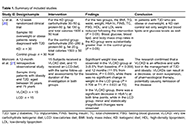 Effectiveness of ketogenic therapy in patients with obesity and diabetes: a narrative reviewOpen AccessReviewOver the past few decades, there has been a major increase in type 2 diabetes (T2D) prevalence, a long-term medical condition in which your body doesn't use insulin properly in most regions of the w [...] Read more.Paola Pellegrini ... Maria D’EliaPublished: July 17, 2024 Explor Foods Foodomics. 2024;2:313–325
Effectiveness of ketogenic therapy in patients with obesity and diabetes: a narrative reviewOpen AccessReviewOver the past few decades, there has been a major increase in type 2 diabetes (T2D) prevalence, a long-term medical condition in which your body doesn't use insulin properly in most regions of the w [...] Read more.Paola Pellegrini ... Maria D’EliaPublished: July 17, 2024 Explor Foods Foodomics. 2024;2:313–325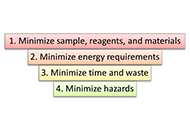 The role of liquid phase microextraction in plant and animal food analysisOpen AccessReviewFood samples require extensive sample preparations for instrumental analyses due to the complex matrices involved. Food safety regulatory agencies also require sample preparation procedures that are [...] Read more.John M. KokosaPublished: July 17, 2024 Explor Foods Foodomics. 2024;2:275–312
The role of liquid phase microextraction in plant and animal food analysisOpen AccessReviewFood samples require extensive sample preparations for instrumental analyses due to the complex matrices involved. Food safety regulatory agencies also require sample preparation procedures that are [...] Read more.John M. KokosaPublished: July 17, 2024 Explor Foods Foodomics. 2024;2:275–312